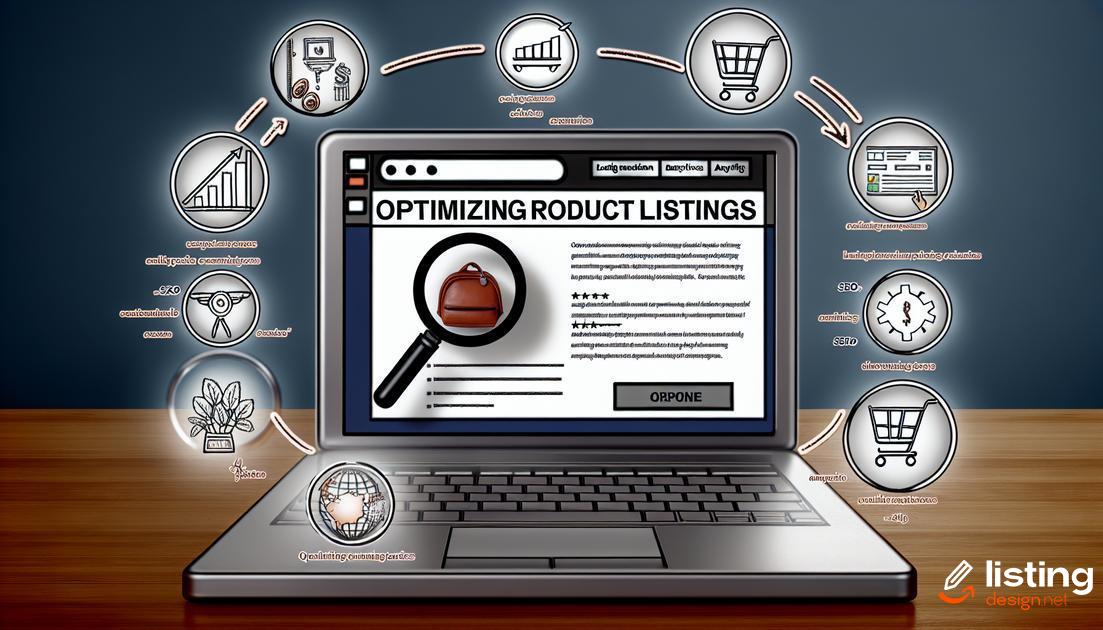Are you eager to start an Amazon business but worried about holding inventory? How to sell on Amazon without inventory might seem challenging, but it’s entirely possible with the right approach. In this blog post, we’ll explore dropshipping, finding suppliers, and the benefits of selling without inventory. So, let’s dive in and discover how you can start a profitable Amazon business today!
Table of Contents
Understanding the Dropshipping Model
The dropshipping model is a popular way to sell products online without keeping inventory. Instead, you partner with suppliers who handle inventory storage and shipment. Whenever a customer makes a purchase through your Amazon store, the order is forwarded to the supplier who then ships the product directly to the customer. This method allows you to focus on marketing and selling without the burdens of inventory management.
One major advantage of the dropshipping model is the low upfront cost. You don’t have to invest heavily in stock, which makes it accessible for beginners. Additionally, you can offer a wide range of products without worrying about storage space.
When it comes to order processing, automation tools can be very helpful. These tools can streamline the process of forwarding orders to suppliers, ensuring timely shipments and reducing the likelihood of mistakes.
However, it’s important to choose reliable suppliers who can deliver quality products on time. Any delays or quality issues can reflect poorly on your Amazon store and affect your seller rating.
Another critical aspect is managing returns and customer service. Since you’re not handling the products directly, you need to have clear policies in place and maintain good communication with your suppliers to handle any issues that may arise with orders.
Benefits of Selling Without Inventory
Reduced Overhead Costs
One of the primary advantages of selling without inventory is the significant reduction in overhead costs. Since you are not required to invest in large quantities of stock, you save on storage and warehousing expenses. Additionally, there are no costs associated with inventory management systems or hiring staff to handle stock.
Less Financial Risk
Without the need to purchase inventory upfront, you face considerably less financial risk. In a traditional business model, unsold inventory ties up capital, but with a dropshipping approach, you only buy products that you’ve already sold. This minimizes the risk of loss from unsold products.
Increased Product Range
Expanding your product range becomes more feasible when you do not have to physically hold inventory. You can offer a wider variety of products to your customers, testing new markets and adjusting your product lines quickly based on sales performance and trends.
Scalability
Selling without inventory allows for easier scalability. Since you are not limited by storage space or the need to manage stock levels, scaling your business becomes more straightforward. As your sales grow, you can continue to add new products and serve more customers without significant infrastructure investments.
Time Efficiency
When you sell without inventory, much of the logistical burden is handled by your suppliers. This frees up valuable time that you can dedicate to other crucial aspects of your business, such as marketing, customer service, and strategic planning.
Geographic Flexibility
Without the need to manage products physically, you can run your business from virtually anywhere. This geographic flexibility is particularly beneficial for digital nomads and those seeking to operate a location-independent business.
Finding Reliable Suppliers
One of the most critical steps in selling on Amazon without inventory is finding reliable suppliers. A reliable supplier ensures that products are consistently in stock, of high quality, and shipped on time. Start by researching suppliers who specialize in dropshipping. Platforms like Alibaba, AliExpress, and Doba can be very useful.
Communication is key when working with a supplier. Ensure they understand your requirements and expectations clearly. Another crucial factor is the supplier’s track record. Check reviews and testimonials from other sellers. This insight will help gauge reliability and quality. Additionally, inquire about their return and refund policies.
Consider using supplier directories or networks. These directories often list vetted, reliable suppliers. For instance, ThomasNet is a comprehensive resource for finding industrial suppliers, while SaleHoo specializes in dropshipping suppliers. When it comes to legalities, ensure the supplier meets all the regulatory compliance requirements for the regions they ship to. This prevents future disputes and ensures a smooth supply chain flow.
Using Amazon FBA for Dropshipping
Amazon FBA (Fulfillment by Amazon) is a service that allows sellers to store their products in Amazon’s fulfillment centers. Dropshipping is a retail fulfillment method where a store doesn’t keep the products it sells in stock. Combining these two methods can streamline your business operations and enhance customer satisfaction.
How It Works
- Step 1: Sourcing Products – Identify products you want to sell and arrange with the supplier or manufacturer to send the products directly to Amazon’s warehouses.
- Step 2: Listing Products – Create detailed and optimized product listings on Amazon. Ensure that your listings include high-quality images, thorough descriptions, and relevant keywords.
- Step 3: Shipping Inventory – When you receive an order, the supplier sends the products to Amazon’s fulfillment center, where they are stored until a customer purchases them.
- Step 4: Customer Orders – Once an order is placed, Amazon picks, packs, and ships the product directly to the customer. They also handle customer service and returns, which frees up your time to focus on other parts of your business.
Benefits
- Speed and Efficiency – Amazon’s logistics network ensures fast and reliable shipping, which can improve customer satisfaction and increase sales.
- Scalability – You can easily scale your business without worrying about storage space or logistics, as Amazon handles these aspects.
- Customer Trust – Customers trust Amazon’s fulfillment services, which can enhance your brand credibility.
- Global Reach – Using Amazon FBA, you can tap into Amazon’s global marketplace, reaching a wider audience without additional effort.
Considerations
- Costs – FBA fees can add up, so it’s important to calculate these costs into your pricing strategy to ensure profitability.
- Inventory Management – Ensure that your supplier can consistently meet demand to avoid stockouts, which can negatively impact your sales and customer satisfaction.
Setting Up Your Amazon Seller Account
Step-by-Step Process
- Register for an Amazon Seller Account: Begin by visiting the Amazon Seller Central sign-up page. You will need to provide your business and contact information.
- Choose Your Selling Plan: Amazon offers two selling plans: the Professional Plan and the Individual Plan. Choose the one that best fits your business needs. The Professional Plan is usually ideal for dropshipping due to its advanced features.
- Add Your Bank and Tax Information: Ensure you have all necessary financial information ready. You’ll need to provide your bank account details for payments and fulfill tax-related requirements like your tax ID or social security number.
- Create Your Seller Profile: Make sure your public profile represents your brand well. Include a professional logo, a compelling description, and contact details to enhance credibility.
- Set Up Shipping Settings: Since you’re opting for dropshipping or using Amazon FBA, configure your shipping settings to reflect the appropriate handling and delivery times.
- Understand Amazon’s Policies: Familiarize yourself with Amazon’s selling policies and guidelines to avoid future issues. Adherence to these rules is crucial for sustaining a good seller status.
- List Your Products: Once your account is set up, start listing your products. Use high-quality images, accurate descriptions, and keywords to optimize your listings.
- Verify Your Account: To gain full access to all features, complete Amazon’s verification process, which may include providing additional documents or information.
Proper setup of your Amazon seller account is pivotal for a smooth selling experience. Attentive configuration now can prevent potential hassles later.
Optimizing Product Listings
Effective optimization of your product listings is crucial for visibility and sales on Amazon. Start by conducting thorough keyword research to identify the most relevant and high-traffic search terms for your products. Use tools like Google Keyword Planner, Ahrefs, or Helium 10 to gather valuable insights.
Incorporate these keywords naturally into your product title, making sure it remains clear and compelling. Your title should include essential details such as the brand, product name, and key features. Next, craft a bullet point list that highlights the most important attributes and benefits of your product. Each bullet point should be concise yet descriptive, providing potential buyers with quick, digestible information.
The product description should expand on the details provided in your bullet points, offering a more comprehensive overview of your product. Utilize HTML tags like <strong> and <em> to emphasize key points and improve readability. Ensure that the content is engaging and addresses potential questions or concerns customers may have.
Don’t overlook the importance of high-quality product images. Include multiple images from different angles, showing the product in use if possible. High-resolution visuals help build trust and give customers a better understanding of what they are purchasing.
Lastly, leverage Amazon’s Enhanced Brand Content (EBC) or A+ Content if you have access. This feature allows you to create rich multimedia product descriptions with images and text placements that can further enhance the shopping experience and boost conversion rates.
Pricing Strategies for Competitive Advantage
Pricing Strategies for Competitive Advantage
When selling on Amazon without inventory, developing effective pricing strategies can set you apart from competitors. Start by analyzing competitor prices and identifying trends. Use tools like CamelCamelCamel or Keepa to track price history and fluctuations.
Consider adopting dynamic pricing, which automatically adjusts your prices based on market conditions, competitor pricing, and customer demand. This approach helps maintain competitiveness while maximizing profits. Amazon’s Automate Pricing tool can aid in managing dynamic pricing effectively.
Offering bundle deals is another useful strategy. By combining complementary products, you can provide added value to customers, making your offer more attractive than individual items. Set a price point that offers savings compared to purchasing items separately.
Leverage psychological pricing techniques, such as pricing items just below a round number (e.g., $19.99 instead of $20.00). This method can subtly influence customer perception, making the product appear cheaper and increasing the likelihood of purchase.
Don’t forget to factor in all costs, including shipping, Amazon fees, and supplier costs, to ensure your pricing strategy remains profitable. Regularly review and adjust your prices to reflect changes in costs or market conditions.
Leveraging Amazon Advertising
Amazon Advertising is a powerful tool that can help you boost visibility and sales for your products. By creating targeted ad campaigns, you can reach the right audience and drive more traffic to your listings.
Creating Your First Ad Campaign
To start, navigate to the Amazon Advertising dashboard and click on ‘Create campaign.’ Choose the type of campaign that best fits your needs, such as Sponsored Products, Sponsored Brands, or Sponsored Display.
Sponsored Products: Ads for individual product listings that appear in search results and on product pages. These ads are suitable for promoting specific items.
Sponsored Brands: Ads that feature your brand logo, a custom headline, and multiple products. These ads drive brand awareness and highlight your product range.
Sponsored Display: Display ads that reach customers both on and off Amazon. Ideal for retargeting and reaching shoppers who have shown interest in similar products.
Targeting Options
Amazon offers a variety of targeting options, including keyword targeting, product targeting, and audience targeting. Use these to narrow down your audience and ensure your ads are shown to users who are more likely to make a purchase.
Keyword Targeting: Target specific keywords related to your products. Bid on these keywords to have your ads appear in search results when customers search for those terms.
Product Targeting: Target specific products or categories to show your ads on related product detail pages.
Audience Targeting: Reach customers based on their shopping behavior, interests, and demographics. This is useful for highly tailored ad campaigns.
Budgeting and Bidding
Set a daily budget for your ad campaigns to control your spending. Additionally, choose between manual and automatic bidding strategies. Manual bidding allows you to set bids for specific keywords or targets, while automatic bidding lets Amazon adjust your bids for optimal performance.
Measuring Campaign Performance
Regularly monitor your ad campaign performance using Amazon Advertising reports. Key metrics to track include impressions, clicks, click-through rate (CTR), and advertising cost of sales (ACoS). Use these insights to optimize your campaigns and improve your return on investment (ROI).
Managing Customer Service
Efficient Response Times: Address customer inquiries and issues promptly. Aim to respond within 24 hours to maintain customer satisfaction and trust.
Utilize Amazon’s Messaging System: Make use of Amazon’s integrated messaging services to keep communication organized and professional. This helps in tracking all customer interactions in one place.
Personalize Responses: Tailor your messages to fit the customer’s specific concerns. Avoid using generic responses as they can seem impersonal and may not fully address the issue.
Handle Returns and Refunds Gracefully: Establish clear return and refund policies. Ensure these policies are easy for customers to understand and follow, reducing frustration and enhancing their shopping experience.
Monitor Customer Feedback: Regularly review feedback to identify trends in customer sentiment. This can help you make necessary improvements in your service.
Provide Additional Support: Offer links to FAQs, how-to guides, or video tutorials to help customers find solutions on their own if immediate assistance isn’t available.
Escalate Issues When Needed: Know when to escalate a problem to Amazon’s support team. This ensures that serious issues are resolved promptly and satisfactorily.
Avoiding Common Pitfalls
When navigating the waters of dropshipping on Amazon, there are several common pitfalls you should steer clear of to ensure your success. Firstly, beware of unreliable suppliers. Doing thorough research and vetting your suppliers can save you a lot of headaches and ensure a steady supply of quality products to your customers.
Second, avoid neglecting customer service. Even though you don’t handle the inventory directly, maintaining excellent customer service is vital for retaining customers and securing positive reviews. Negative reviews can significantly impact your seller rating on Amazon.
Third, compliance with Amazon’s policies is non-negotiable. Amazon has strict rules about dropshipping, and failing to comply can result in account suspension. Always ensure your supplier understands Amazon’s guidelines and complies with them.
Another common pitfall is ignoring market research. Understanding what products are in demand can help you avoid stocking up on items that won’t sell. Use market research tools to get insights into trending products and customer needs.
Managing financials effectively is another critical aspect. It’s easy to overlook the importance of cash flow management when you’re starting out. Make sure you keep track of your finances to avoid issues like overextending your budget or underestimating costs.
Lastly, don’t underestimate the importance of branding. Set your products apart with strong branding to build a loyal customer base and enhance your listings’ appeal.
Scaling Your Amazon Business
Once you’ve established a solid foundation, it’s crucial to focus on scaling your Amazon business for sustained growth and increased profits. Scalability involves optimizing various aspects of your operations to handle higher volumes of sales without compromising on quality or customer experience.
An effective way to scale is by automating repetitive tasks. This can include using software to manage inventory, track shipments, and handle customer inquiries. Automation not only saves time but also reduces the risk of human error.
Expanding your product line is another strategy to consider. Diversifying your offerings can attract a broader customer base and boost your overall sales. However, ensure that any new products align with your brand and meet the same quality standards as your existing inventory.
Invest in Marketing and Advertising
Investing in marketing and advertising is crucial for scaling your business. Utilize Amazon’s PPC (Pay-Per-Click) advertising to increase your product’s visibility. Additionally, consider off-Amazon advertising options like social media ads, influencer partnerships, and content marketing to drive traffic to your listings.
Another key to scaling is improving your supply chain management. Ensure that your suppliers can handle increased order volumes and maintain consistent quality. Building strong relationships with reliable suppliers can help you negotiate better terms and reduce lead times.
Analyzing data and continuously optimizing your strategies is essential for growth. Use tools like Amazon Seller Central and third-party analytics software to track key performance metrics. Regularly review this data to identify trends, areas for improvement, and opportunities for expansion.
Outsourcing non-core tasks such as customer service, content creation, and account management can also help you focus on growth activities. Partnering with experienced freelancers or agencies can provide you with the expertise needed to scale effectively.
Maintain Excellent Customer Service
While scaling, it’s critical to maintain high standards of customer service. Happy customers lead to positive reviews and repeat business, which are essential for long-term success on Amazon. Implement systems to handle increased customer inquiries, returns, and complaints efficiently.
Finally, always stay updated with Amazon’s policies and market trends. The e-commerce landscape is constantly evolving, and staying informed will help you adapt quickly and maintain a competitive edge.
Case Studies of Successful Sellers
Case Study 1: John’s Electronics
John started selling electronics on Amazon with a dropshipping model. By identifying reliable suppliers, he managed to offer competitive prices. He focused on optimizing product listings and leveraging Amazon advertising to reach a broader audience. John saw significant growth within six months, and his monthly sales increased by 200%.
Case Study 2: Emily’s Boutique
Emily chose to sell women’s fashion utilizing Amazon FBA for dropshipping. She invested time in finding high-quality suppliers and establishing a strong brand presence. Emily’s strategic pricing and excellent customer service led to positive reviews and repeat customers, increasing her revenue by 150% in the first year.
Case Study 3: Mike’s Home Goods
Mike launched his home goods store with a focus on unique and trending items. By optimizing his product listings with relevant keywords and high-quality images, he improved his visibility on Amazon. Mike also used promotional discounts to attract initial buyers and leveraged customer feedback to refine his offerings. Within the first three months, his sales doubled, and he scaled his business to include more product lines.
These case studies illustrate how effective strategies in product listing optimization, advertising, customer service, and supplier reliability can significantly impact sales and business growth on Amazon.








